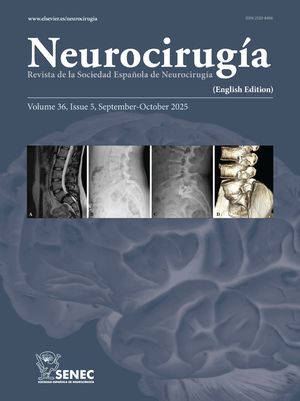Analizar en distintos grupos de pacientes con glioblastoma multiforme (G.M.) el efecto de las distintas terapias (cirugía, radioterapia y quimioterapia con temozolamida) en su supervivencia.
MétodoEs analizada, retrospectivamente, la supervivencia global de 85 pacientes con diagnóstico histopatológico de G.M. Cada uno de los 4 grupos de pacientes corresponde a un periodo de tiempo distinto y se dividen según el tratamiento efectuado en: grupo 1 (n=12): pacientes no sometidos a ningún tratamiento (salvo corticoides o sintomático); grupo 2 (n=22): pacientes sometidos sólo a tratamiento quirúrgico (serie retrospectiva años 80); grupo 3 (n=24): pacientes sometidos a tratamiento quirúrgico + radioterapia (grupo de control); grupo 4 (n=27): pacientes sometidos a tratamiento quirúrgico + radioterapia + quimioterapia con temozolamida (TMZ) (grupo de estudio). Se emplea el método de Kaplan-Meier y el test de Log-Rank para la comparación de curvas de supervivencia.
ResultadosLa edad media no mostró diferencia significativa entre los grupos. La media/mediana de la supervivencia en semanas resultó para el grupo 1: 18/16; grupo 2: 23/14; grupo 3: 48/42; grupo 4: 70/64, evidenciando una diferencia significativa el hecho de añadir en el tratamiento radioterapia (grupo 3) al tratamiento quirúrgico (grupo 2) o a la abstención terapéutica (grupo 1), y una diferencia significativa (p<0.001) en la supervivencia al añadir TMZ (grupo 4 de estudio) al tratamiento convencional, hasta la fecha, de cirugía + radioterapia (grupo 3 de control).
Conclusionesla cirugía por sí misma no aporta mayor supervivencia a los pacientes con G.M., aunque permite el diagnóstico AP, mejorar síntomas y signos atribuibles a la hipertensión intracraneal o la topografía tumor al y reducir el número de células objetivo de tratamientos complementarios. Al añadir radioterapia al tratamiento quirúrgico mejora la supervivencia de los pacientes, así como el tratamiento quimioterápico con TMZ administrada tras la misma añade una mayor supervivencia a los pacientes con G.M.
To analyze the effect of different therapies -surgery, radiotherapy, and chemotherapy (temozolomide)- on the survival of various groups of patients with glioblastoma multiforme (GBM).
MethodThe overall survival of a total of 85 patients with histopathological diagnosis of GBM was analyzed (descriptive statistics, Kaplan-Meier). Patients were divided into 4 treatment groups: group 1 (n=12), untreated patients (“no treatment” option was chosen by the family); group 2 (n=22), patients undergoing surgery only (retrospective series from the 1980s); group 3 (n=24), patients undergoing surgery + standard radiotherapy (control group, partially effective treatment); group 4 (n=27), patients undergoing surgery + radiotherapy + chemotherapy (temozolomide [TMZ]) (current study group).
ResultsMean age (one-way ANOVA) showed no significant difference between the groups. Mean/median survival (weeks) was as follows: group 1, 18/16; group 2, 23/14; group 3, 48/42; group 4, 70/64. The Kaplan-Meier analysis yielded the following 50% survival cut-offs (weeks): group 1, 16.00; group 2, 14.29; group 3, 42.00; group 4, 64.43. This demonstrated a significant difference when radiotherapy (group 3) was added to surgery (group 2) or no treatment (group 1), and a significant difference (p<0.001) in survival when TMZ (group 4) was added to the so far considered as being the standard treatment (group 3: surgery + radiotherapy).
ConclusionsSurgery alone does not result in a higher survival rate for GBM patients. However, surgery allows to establish a histopathological diagnosis, to improve signs and symptoms which are attributable to intracranial hypertension or tumour topography, and to reduce the number of target cells for adjunctive the-rapies. Radiotherapy improves survival and TMZ che-motherapy that is given after radiotherapy adds further survival beneflt for patients.
Article

If it is the first time you have accessed you can obtain your credentials by contacting Elsevier Spain in suscripciones@elsevier.com or by calling our Customer Service at902 88 87 40 if you are calling from Spain or at +34 932 418 800 (from 9 to 18h., GMT + 1) if you are calling outside of Spain.
If you already have your login data, please click here .
If you have forgotten your password you can you can recover it by clicking here and selecting the option ¿I have forgotten my password¿.






